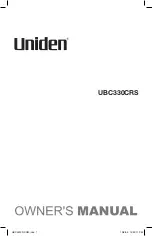
Q
Q
u
u
i
i
c
c
k
k
S
S
c
c
a
a
n
n
S
S
e
e
t
t
t
t
i
i
n
n
g
g
s
s
a
a
n
n
d
d
P
P
r
r
e
e
v
v
i
i
e
e
w
w
W
W
i
i
n
n
d
d
o
o
w
w
f
f
e
e
a
a
t
t
u
u
r
r
e
e
s
s
Source
- Tells the scanner the method you will use to scan images.
•
Tissue Slide
- Use this mode for scanning the tissue slide glass.
Scan
Mode -
Tells the scanner the type of document you are scanning. There
are three settings to choose from:
•
8-bit grayscale -
scans in 256 shades of gray, giving black and white
images.
•
16-bit grayscale
– scans in more than 65,000 shades of gray, improving
the realism of b/w images.
•
24-bit Color
- scans in millions of colors for slide realism. Choose this
mode when scanning color slide. This is the best setting to select for
scanning the tissue slide glass.
•
48-bit Color
– scans in billions of colors for professional imaging
requiring precise uniformity of color.
Resolution -
Resolution is measured in dots per inch (dpi). The higher the
resolution, the more detailed the image, and the more memory and drive space
the image will use.
Filter -
Filters help you improve your scans by allowing you to sharpen images
as well as remove excessive dots and distortion.
None
Average:
Determines the medium depth of an image and averages
adjacent pixels to make images appear softer.
Blur:
Lets you dull the edges within an image, and decreases the
contrast by making dark edges lighter and light edges darker.
Blur More:
Adds additional blurring.
Sharpen:
Allows you to sharpen the edges within an image by making
the edges in an image more distinct. The Sharpen filter also
increases contrast by making dark edges darker and
surrounding light edges lighter.
Sharpen More:
Adds additional sharpening
.
Unsharpen:
Sharpens the edges in an image to remove the blurriness. This
is the best setting to select for scanning the tissue slide glass.
15














































